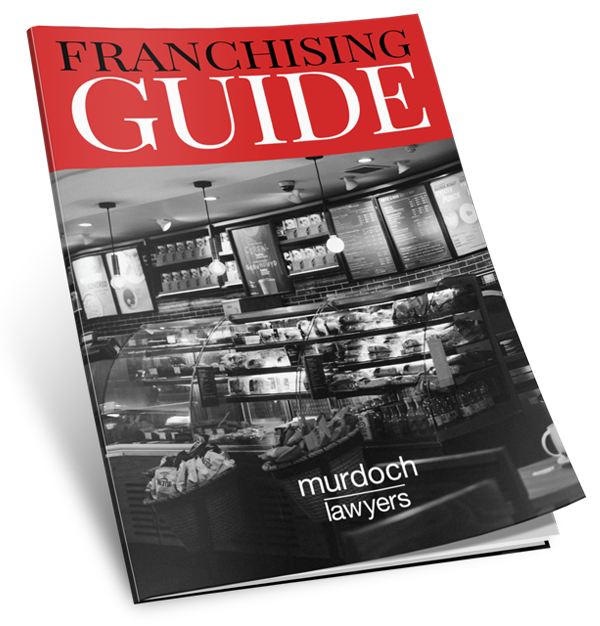
Are your Dispute Resolution Clauses enforceable?
A review of the recent Victorian case WTE Co-Generation & Anor V RCR Energy Pty Ltd & Anor [2013] VSC 314 (21 June 2013)
As alternative dispute resolution processes become increasingly popular due to their perceived time and cost benefits, parties continue to regularly include such clauses in their commercial contracts; the intention being that, should a dispute arise under the contact, the parties must then follow the alternative dispute resolution process specified as a mandatory pre-condition to commencing any litigation under the contract in the Courts. This process may include mediation, arbitration or negotiation (or, in some instances, all three).
The recent Victorian Supreme Court decision of WTE Co-Generation & Anor v RCR Energy Pty Ltd & Anor[1] highlights and reinforces that it is an essential requirement that such clauses be drafted in clear and certain terms to ensure they are enforceable. This article reviews the recent decision and its reasoning, and also provides some helpful tips to keep in mind when drafting or reviewing your current contracts.
Background
A dispute arose under the subject contract between the supplier, RCR Energy (“RCR”), and the principals, WTE Co-Generation (“WTE”) and Visy Paper Pty Ltd (“Visy”). As a result, WTE issued a show cause notice to RCR.
RCR responded, however, not to WTE’s satisfaction and WTE purported to take over the remaining work from RCR pursuant to the Contract.
An additional show cause notice was issued to RCR by WTE requesting RCR demonstrate why WTE should not terminate the Contract. WTE was again unsatisfied with RCR’s response and subsequently commenced proceedings against RCR alleging breach of contract.
Clause 42 of the relevant contract dealt with situations where a dispute arose between the parties and provided:
“42.1 Notice of dispute
If a difference or dispute (together called a ‘dispute’) between the parties arises in connection with the subject matter of the Contract, including a dispute concerning:
- a Superintendent’s direction; or
- a claim:
- in tort;
- under statute;
for restitution based on unjust enrichment or other quantum meruit; or for rectification or frustration, or like claim available under the law governing the Contract,
then either party shall, by hand or by registered post, give the other and the Superintendent a written notice of dispute adequately identifying and providing details of the dispute.
Notwithstanding the existence of a dispute, the parties shall, subject to clauses 39 and 40 and subclause 42.4, continue to perform the Contract.
42.2 Conference
Within 7 days after receiving a notice of dispute, the parties shall confer at least in the presence of the Superintendent. In the event the parties have not resolved the dispute then within a further 7 days a senior executive representing each of the parties must meet to attempt to resolve the dispute or to agree on methods of doing so. At every such conference each party shall be represented by a person having authority to agree to such resolution or methods. All aspects of every such conference except the fact of occurrence shall be privileged. [Emphasis added]
If the dispute has not been resolved within 28 days of service of the notice of dispute, that dispute may be referred to litigation…”[2]
RCR subsequently made an application to the Court to stay WTE’s breach of contract proceeding until the parties had complied with the dispute resolution procedures outlined in clause 42 of the Contract.
Decision and Reasoning
At the hearing of RCR’s application, WTE and Visy asserted that the dispute resolution clause contained in the contract was unclear and uncertain. Accordingly, they argued the clause was unenforceable, therefore entitling them to commence legal proceedings for breach of contract without regard to it.
Conversely, RCR argued the simplicity of sub-clause 42.2 enhanced the certainty of the clause.
The Court distinguished the case before it from the case of United Group Rail Services Ltd v Rail Corporation of New South Wales[3] where the New South Wales Court of Appeal had upheld a dispute resolution clause which stated: “… the dispute or difference is to be referred to a senior executive of each of the Principal and the Contractor who must…meet and undertake genuine and good faith negotiations with a view to resolving the dispute or difference…”[4]. The clause in this matter was distinguishable because sub-clause 42.2 merely stated “a senior executive representing each of the parties must meet to attempt to resolve the dispute or to agree on methods of doing so”[5] without anything more.
The case of Aiton Australia Pty Ltd Transfield Pty Ltd[6] was also relied on by WTE and Visy in support of their argument of unenforceability and considered by the Court. Aiton was a case that considered a relatively well defined dispute resolution clause. The contract there articulated the procedures to be observed by the parties prior to commencing litigation. The provisions of the contract provided the parties “shall make good faith efforts to comply with the stage procedure for dispute resolution before either party commences mediation, legal action or expert resolution.”[7] Failing that process, it stipulated that the parties will attend mediation as a second dispute resolution procedure. The Court, in that case, found that this process was sufficiently certain to be enforceable with Justice Einstein reasoning: “What is enforced is not cooperation and consent but participation in a process from which consent might come….It is for this reason that that the process from which consent might come must be sufficiently certain.”[8] [Emphasis added]
In the present case under review, Justice Vickery stated that sub-clause 42.2 required the parties to do one of two things; either meet together in an attempt to resolve the dispute or agree on a method of doing so.[9]
Critically, sub-clause 42.2 did not contemplate an actual method of dispute resolution. Rather, the latter part of the clause was essentially an agreement to agree on a process. In this respect, the Court stated that “as a minimum, what is necessary for a valid and enforceable dispute resolution clause, is to set out the process or model to be employed, and in a manner which does not leave this to further agreement.”[10]
As a result, the Court refused RCR’s application to stay the proceeding filed by WTE on the grounds that the dispute resolution clause at clause 42 was uncertain and ultimately unenforceable.
What you need to consider
In its decision, the Court helpfully highlighted a number of general principles which parties to a contract must comply with if their intention is to make an alternative dispute resolution process under a contract a mandatory requirement before a party can commence litigation in the Courts.
In summary, the following need to be considered:
- The dispute resolution clause should operate to make the completion of an alternative dispute resolution process a condition precedent to litigation.
- The dispute resolution clause should clearly articulate the process the parties are to adopt in the event of a dispute. There cannot be parts of the process that require the agreement of the parties. Accordingly, the clause should detail the rules and procedures of the process the parties should follow.
- If there are multiple dispute resolution procedures, outline what order each method is to be pursued by the parties.
- The process for appointing an expert or mediator should be included in any dispute resolution clause along with details of how the expert or mediator will be remunerated. In the event the parties are unable to reach an agreement as to the appointment of the expert or mediator, there should also be a clause which provides for a process whereby a third party will make the selection.
It seems clear that any departure from the above principles will likely result in a Court finding a dispute resolution clause in a contract is uncertain and unenforceable. This means, in essence, that a Court will not provide any relief to a party where a dispute arises under a contract and the other party commences court proceedings without following the dispute resolution clause.
Conclusion
Whilst Justice Vickery, in the WTE case, reaffirmed that courts should continue to construe dispute resolution clauses robustly in order to give commercial effect to them, the case also reinforces the need for parties to be vigilant and cautious when drafting or reviewing dispute resolution clauses.
The case also highlights and confirms the Court’s reluctance to intervene and prescribe an appropriate dispute resolution procedure where the relevant dispute resolution clause in the contract is uncertain or ambiguous.[11] A “contract which leaves the process or model to be utilised for the dispute resolution ill defined, or the subject of further negotiation or agreement, will be uncertain”[12] and therefore unenforceable.
Accordingly, you must ensure that your contractual dispute resolution clauses are clear and unambiguous, and sufficiently stipulate the process, procedure and rules to be followed by the parties to the contract when complying with the clause.
Should you require assistance in drafting or reviewing your dispute resolution clauses, or for general information, please contact a member of our Dispute Resolution team on (07) 4616 9898.
This article is intended to provide a general summary only, does not constitute legal advice and must not be relied on as such. Copyright Murdoch Lawyers 2013.
[1] [2013] VSC 314.
[2] WTE Co-Generation & Anor v RCR Energy Pty Ltd & Anor [2013] VSC 314 at [12].
[3] [2009] NSWCA 177; (2009) 74 NSWLR 618.
[4] WTE Co-Generation & Anor v RCR Energy Pty Ltd & Anor [2013] VSC 314 at [18].
[5] Ibid. at [18] – [23].
[6] [1999] NSWSC 996.
[7] WTE Co-Generation & Anor v RCR Energy Pty Ltd & Anor [2013] VSC 314 at [32].
[8] Ibid. at [33]-[34].
[9] Ibid. at [42].
[10] Ibid. at [46].
[11] Ibid. at [46].
[12] Ibid. at [39].




